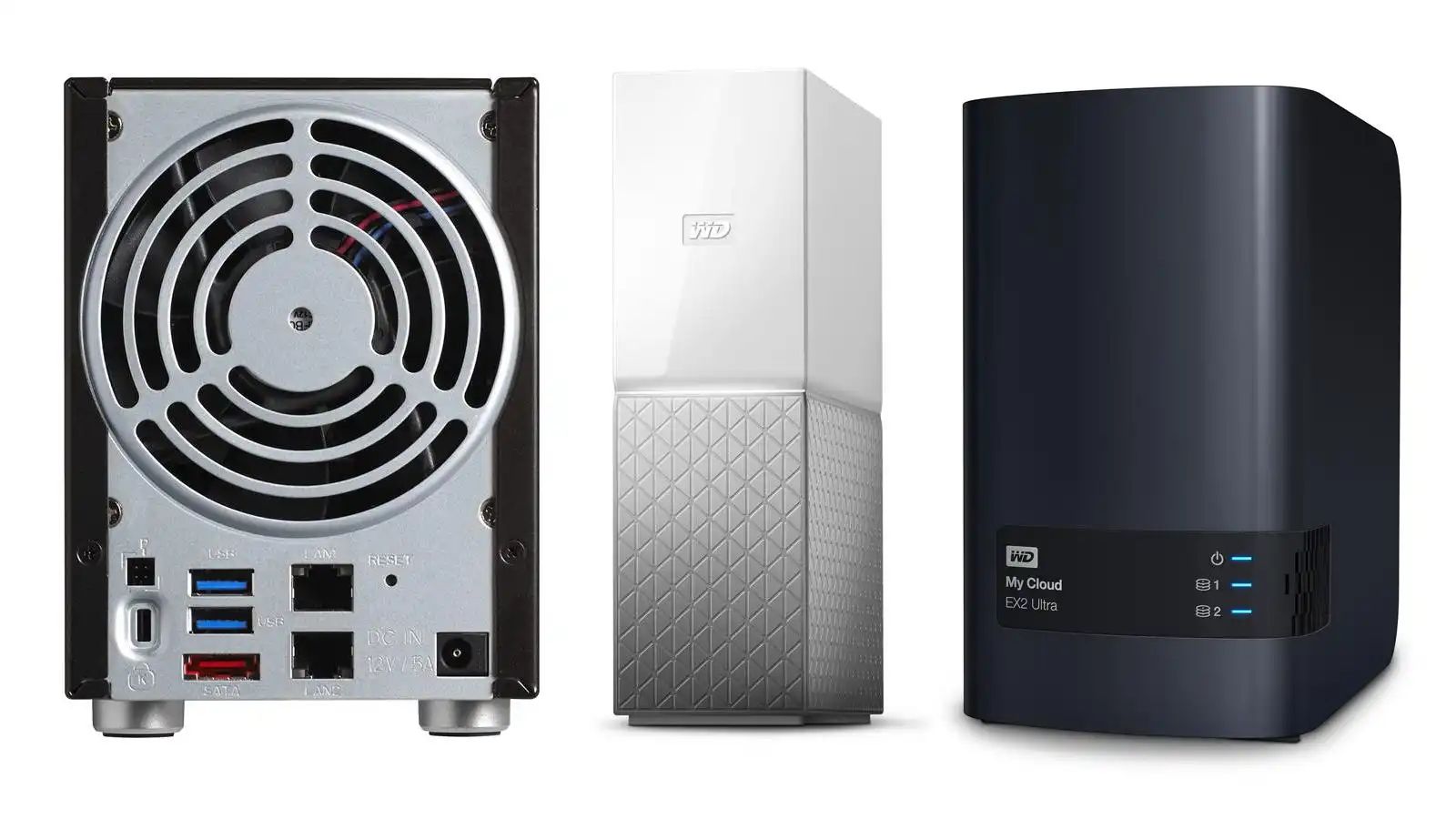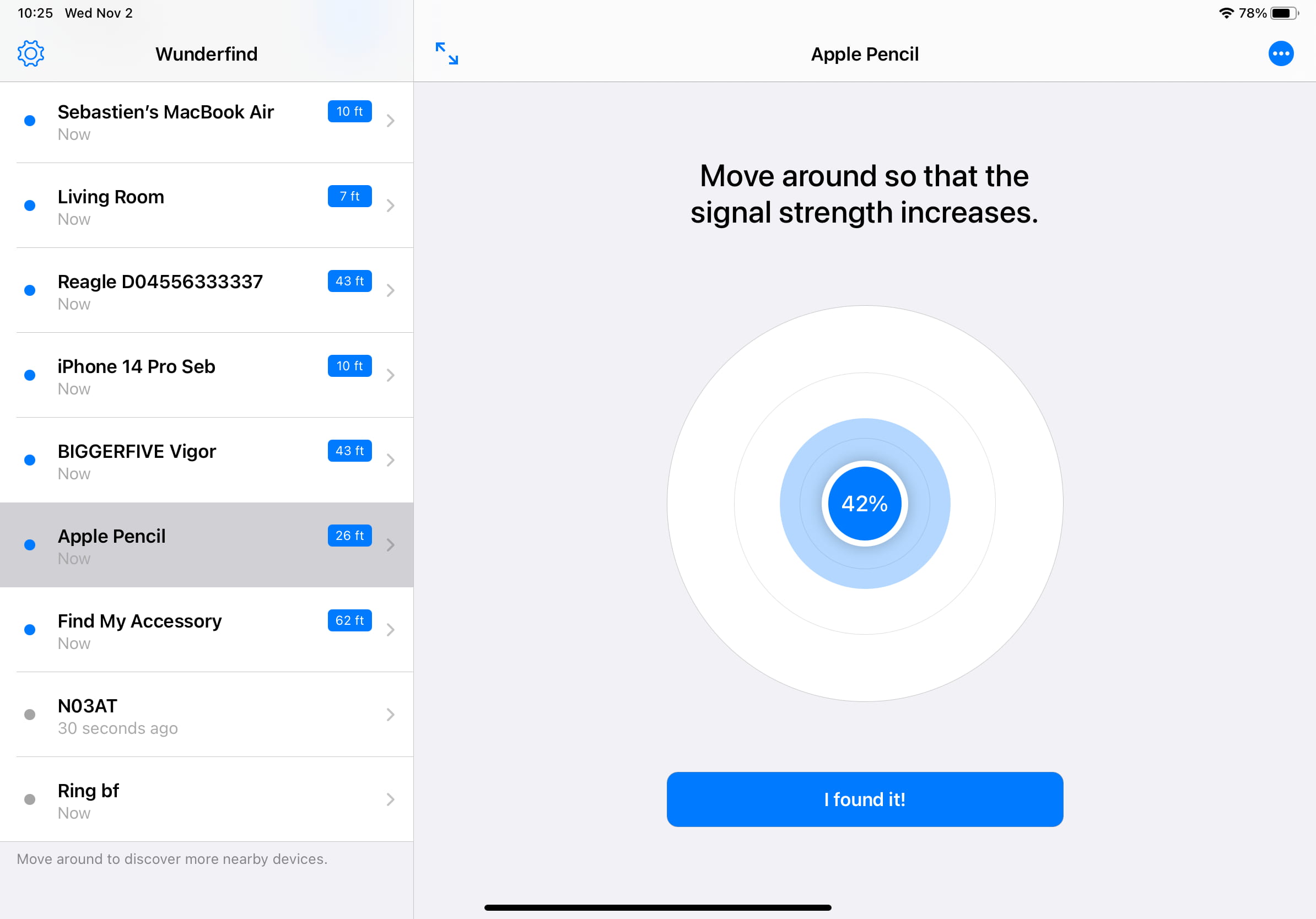Introduction
Welcome to the era of seamless data storage and access! As technology continues to evolve, the need for efficient and accessible data storage solutions has become increasingly prevalent. Network Attached Storage (NAS) serves as a versatile and convenient option for storing and sharing data across multiple devices, and when integrated with Apple devices, it offers a seamless and user-friendly experience.
In this comprehensive guide, we will delve into the world of NAS and its integration with Apple devices. Whether you are a seasoned tech enthusiast or a novice exploring the realm of data storage, this guide will equip you with the knowledge and insights needed to set up and utilize NAS effectively with your Apple devices.
By understanding the fundamentals of NAS and learning the intricacies of setting up and accessing it on your Apple devices, you will gain the ability to effortlessly share and manage data across your interconnected ecosystem. Additionally, we will address common troubleshooting issues, ensuring that you are well-prepared to navigate any challenges that may arise during the integration process.
So, let's embark on this enlightening journey, unraveling the potential of NAS and discovering the seamless synergy it offers when paired with Apple devices. Whether you are looking to streamline your personal data management or optimize your professional workflow, the integration of NAS with Apple devices is a powerful and versatile solution that promises to elevate your digital experience.
Understanding Network Attached Storage (NAS)
Network Attached Storage, commonly referred to as NAS, is a dedicated file storage device that provides local network access to multiple users and various client devices. Unlike traditional storage solutions that are directly attached to a single computer, NAS operates as a centralized repository for data, allowing seamless access from multiple devices within a network.
At its core, NAS comprises one or more hard drives, often configured in a RAID (Redundant Array of Independent Disks) setup to enhance data redundancy and performance. This configuration ensures that even in the event of a drive failure, data remains accessible and intact, safeguarding against potential loss.
One of the defining features of NAS is its ability to operate independently, functioning as a self-contained server with its own operating system. This autonomy enables NAS to perform a diverse range of functions, including file storage, data backup, media streaming, and even hosting applications such as cloud services and surveillance systems.
With the proliferation of digital content and the increasing demand for seamless data accessibility, NAS has emerged as an indispensable tool for both personal and professional use. Whether it’s a home environment seeking to centralize media libraries and backup files or a business network requiring robust data storage and sharing capabilities, NAS offers a scalable and adaptable solution to meet diverse needs.
Furthermore, the integration of NAS with Apple devices presents a myriad of opportunities for streamlined data management and accessibility. By harnessing the power of NAS within the Apple ecosystem, users can effortlessly synchronize and share data across their Mac, iPhone, iPad, and other Apple devices, fostering a cohesive and interconnected digital experience.
As we delve deeper into the intricacies of NAS integration with Apple devices, it is essential to grasp the foundational principles of NAS and its versatile capabilities. By understanding the underlying mechanisms of NAS, you will be well-equipped to harness its potential and leverage it to optimize data storage, sharing, and accessibility within your Apple-centric environment.
Setting up NAS on Apple Devices
Integrating Network Attached Storage (NAS) with Apple devices involves a straightforward yet pivotal process that lays the foundation for seamless data accessibility and sharing. Whether you are setting up a NAS for the first time or expanding your existing network, the steps to integrate it with your Apple devices are designed to be intuitive and user-friendly.
First and foremost, it is essential to ensure that your NAS device is compatible with Apple devices and supports the necessary protocols for seamless integration. Many NAS devices offer native support for Apple’s AFP (Apple Filing Protocol) and SMB (Server Message Block) protocols, enabling effortless connectivity with Mac, iPhone, iPad, and other Apple devices.
Next, accessing the NAS management interface allows you to configure essential settings such as user accounts, shared folders, and network permissions. This step is pivotal in customizing the NAS environment to align with your specific data storage and sharing requirements, ensuring that it seamlessly integrates with your Apple devices.
Once the NAS is configured to your preferences, the next step involves connecting your Apple devices to the NAS. On macOS, this typically involves navigating to the Finder, selecting the “Go” menu, and choosing “Connect to Server.” Here, you can input the network address of your NAS, authenticate using the provided credentials, and mount the NAS shares directly onto your Mac for convenient access.
For iOS and iPadOS devices, accessing NAS shares can be achieved through compatible file management apps available on the App Store. These apps allow you to connect to your NAS, browse shared folders, and even open and edit files directly from your iPhone or iPad, offering a truly mobile-centric approach to NAS integration.
As the integration progresses, it is crucial to prioritize data security and privacy. Utilizing encryption protocols and robust access controls ensures that your data remains safeguarded, especially when accessed from multiple Apple devices within your network.
By following these steps and embracing the seamless integration of NAS with Apple devices, you lay the groundwork for a cohesive and efficient data management ecosystem. The ability to access, share, and synchronize data effortlessly across your Apple devices heralds a new era of digital convenience and productivity, empowering you to harness the full potential of NAS within the Apple ecosystem.
Accessing NAS on Apple Devices
Once Network Attached Storage (NAS) is seamlessly integrated with your Apple devices, accessing the shared data becomes a streamlined and intuitive process. Whether you are working on your Mac, iPhone, iPad, or even Apple TV, the ability to access NAS shares empowers you to retrieve and manage your data with unparalleled convenience.
On macOS, accessing NAS shares is as simple as navigating to the Finder and locating the shared folders mounted from your NAS. These folders seamlessly integrate into the Finder’s sidebar and provide quick access to your stored data, allowing you to open, modify, and organize files directly from your Mac.
Furthermore, macOS offers the option to map NAS shares as network drives, enabling you to access them from any application that supports file operations. This seamless integration ensures that your NAS becomes an integral part of your Mac’s file management ecosystem, fostering a cohesive and efficient workflow.
For iOS and iPadOS devices, the Files app serves as the gateway to accessing NAS shares. By adding the NAS location as a network location within the Files app, you can effortlessly browse, open, and manage files stored on your NAS directly from your iPhone or iPad. This mobile-centric approach to NAS access empowers you to stay productive and organized, even while on the go.
Moreover, the integration of NAS with Apple TV brings forth the ability to access and stream media content stored on your NAS directly to your television. This seamless connectivity transforms your Apple TV into a hub for multimedia entertainment, allowing you to enjoy your favorite movies, music, and photos from the comfort of your living room.
As you access NAS on your Apple devices, it is essential to leverage the robust features offered by macOS, iOS, and iPadOS to manage and organize your data effectively. From tagging and searching files on your Mac to utilizing the powerful file management capabilities of the Files app on your iPhone and iPad, the integration of NAS with Apple devices fosters a cohesive and user-centric approach to data accessibility.
By embracing the seamless access to NAS shares across your Apple devices, you unlock the potential for enhanced productivity, creativity, and entertainment. The ability to seamlessly retrieve and manage your data from any Apple device within your network underscores the transformative impact of NAS integration within the Apple ecosystem.
Sharing NAS with Other Apple Devices
Network Attached Storage (NAS) serves as a centralized repository for data, offering the ability to share and synchronize files across multiple Apple devices within your network. This seamless sharing capability fosters a collaborative and interconnected digital environment, empowering users to effortlessly exchange and access data from various Apple devices.
One of the key advantages of NAS integration with Apple devices is the seamless sharing of files and media libraries. By creating shared folders on the NAS and configuring access permissions, you can enable multiple users to access and contribute to the shared data, fostering a collaborative approach to data management.
On macOS, the ability to share NAS folders with other users within your network is a straightforward process. By leveraging the native file sharing capabilities of macOS, you can grant specific users or groups access to designated NAS folders, facilitating seamless collaboration and data exchange.
For iOS and iPadOS devices, the integration of NAS shares within compatible file management apps enables users to access and contribute to shared data directly from their iPhones and iPads. This mobile-centric approach to NAS sharing ensures that users can collaborate and synchronize data while on the move, enhancing productivity and flexibility.
Furthermore, the integration of NAS with Apple devices extends to multimedia sharing, allowing users to stream and access media content stored on the NAS across multiple Apple devices. Whether it’s streaming a movie from the NAS to an Apple TV or accessing a shared music library from an iPhone or iPad, the seamless sharing capabilities of NAS enrich the entertainment and media consumption experience within the Apple ecosystem.
As the sharing of NAS with other Apple devices unfolds, it is imperative to prioritize data security and access controls. Implementing robust authentication mechanisms and encryption protocols ensures that shared data remains safeguarded, fostering a secure and trusted environment for collaborative data sharing.
By embracing the seamless sharing capabilities of NAS within the Apple ecosystem, users unlock the potential for enhanced collaboration, productivity, and entertainment. The ability to seamlessly share and synchronize data across multiple Apple devices underscores the transformative impact of NAS integration, fostering a cohesive and interconnected digital experience.
Troubleshooting Common Issues
While the integration of Network Attached Storage (NAS) with Apple devices offers a seamless and efficient data management solution, it is not uncommon to encounter occasional challenges that may hinder the optimal functionality of the setup. By understanding and addressing common issues, users can navigate potential obstacles and ensure a smooth and uninterrupted experience with their NAS integration.
One prevalent issue that users may encounter is connectivity disruptions between Apple devices and the NAS. This can manifest as intermittent disconnections or the inability to access NAS shares. To address this, ensuring that all devices and the NAS are connected to a stable and reliable network, and verifying that the NAS firmware and software on Apple devices are up to date, can often resolve connectivity issues.
Another common challenge involves permissions and access controls. Users may encounter difficulties accessing specific NAS folders or may experience restrictions when attempting to modify or delete files. Addressing this issue involves reviewing and adjusting the permissions settings on the NAS, ensuring that users have the necessary access privileges to perform their intended actions.
Performance issues, such as slow data transfer speeds or delays in accessing NAS shares, can also impact the user experience. Optimizing network settings, ensuring that the NAS hardware is functioning optimally, and employing efficient network protocols can help mitigate performance-related issues, enhancing the overall responsiveness of the NAS integration.
Data synchronization discrepancies across multiple Apple devices within the network can also pose a challenge. This may result in inconsistencies between shared data, leading to confusion and potential data loss. Implementing robust synchronization protocols and regularly verifying the integrity of shared data can aid in resolving synchronization issues, ensuring that data remains consistent and up to date across all devices.
Moreover, compatibility issues between the NAS and specific Apple devices or operating system versions may arise. In such cases, consulting the NAS manufacturer’s support resources and staying informed about software updates and compatibility requirements can help mitigate potential compatibility challenges, ensuring a harmonious integration across the Apple ecosystem.
By proactively addressing these common issues and staying informed about best practices for NAS integration with Apple devices, users can cultivate a resilient and optimized data management environment. The ability to troubleshoot and resolve potential challenges underscores the adaptability and robustness of the NAS integration, empowering users to harness its full potential within the Apple ecosystem.
Conclusion
As we conclude our exploration of integrating Network Attached Storage (NAS) with Apple devices, it becomes evident that the synergy between NAS and the Apple ecosystem fosters a transformative approach to data management, accessibility, and sharing. By harnessing the capabilities of NAS within the Apple ecosystem, users unlock a seamless and interconnected digital experience that transcends traditional data storage solutions.
The fundamental understanding of NAS and its versatile capabilities lays the groundwork for a holistic integration with Apple devices. From setting up NAS to accessing and sharing data across Mac, iPhone, iPad, and even Apple TV, the integration process is designed to be intuitive and user-centric, empowering users to streamline their digital workflows and enhance their productivity.
Moreover, the troubleshooting of common issues underscores the adaptability and resilience of the NAS integration, ensuring that potential challenges are met with informed solutions and proactive measures. This proactive approach enables users to navigate obstacles and maintain a seamless and uninterrupted experience with their NAS integration, reinforcing the reliability and robustness of the setup.
Ultimately, the integration of NAS with Apple devices transcends mere data storage and accessibility—it embodies a paradigm shift in digital convenience, collaboration, and entertainment. Whether it’s seamlessly accessing shared files across multiple Apple devices, streaming media content to Apple TV, or collaborating on data-intensive projects, the NAS integration enriches the Apple ecosystem with unparalleled versatility and cohesion.
As technology continues to evolve and the demand for efficient data management solutions grows, the integration of NAS with Apple devices stands as a testament to the transformative potential of interconnected digital ecosystems. By embracing the seamless synergy between NAS and the Apple ecosystem, users embark on a journey of enhanced productivity, creativity, and connectivity, redefining the way data is stored, accessed, and shared within their digital lives.
In essence, the integration of NAS with Apple devices transcends the conventional boundaries of data storage and accessibility, ushering in a new era of digital empowerment and cohesion. It represents a harmonious fusion of innovative technology and user-centric design, promising a future where data management seamlessly integrates with the rhythm of our digital lives, enriching and empowering every interaction within the Apple ecosystem.

























